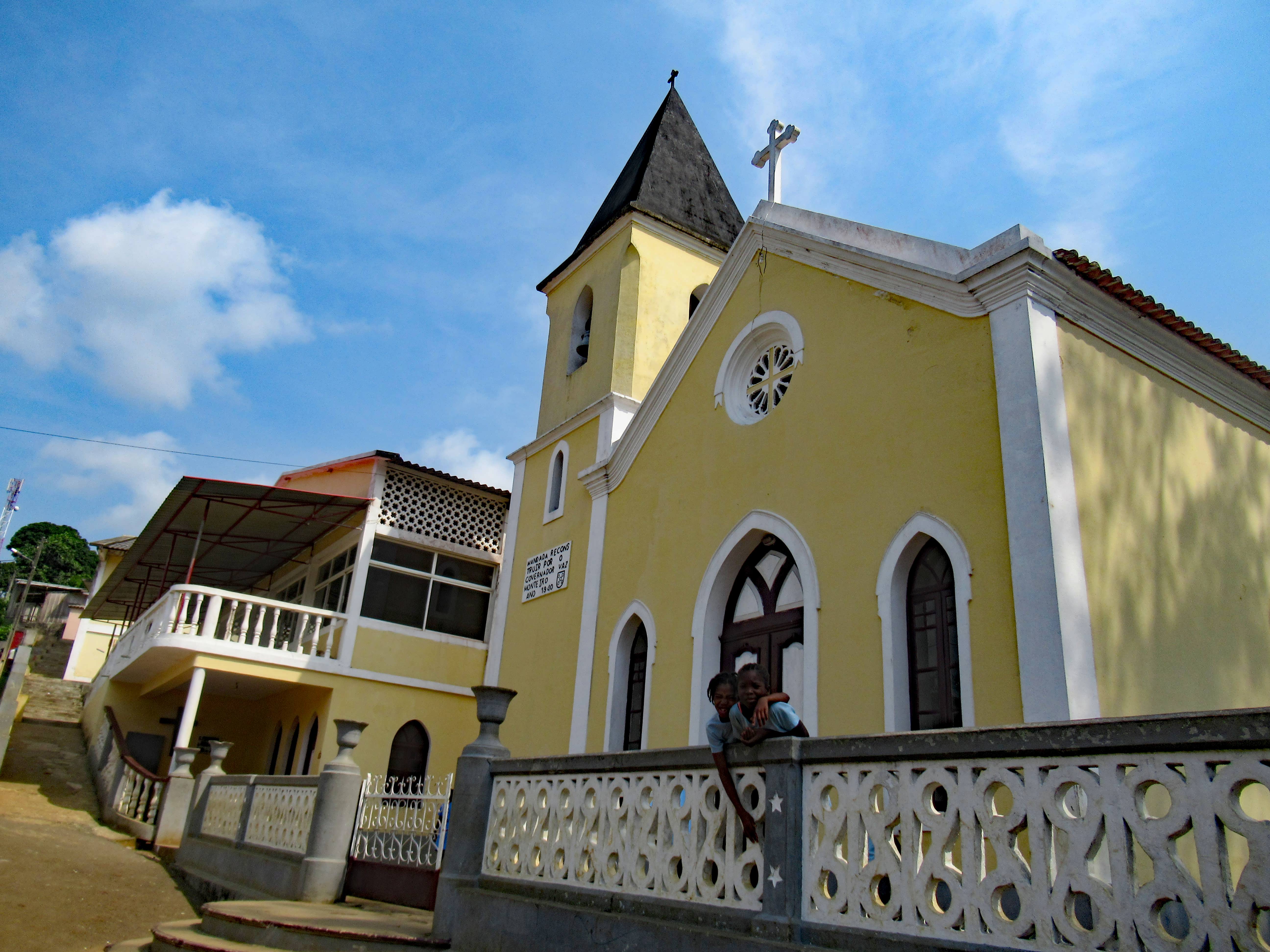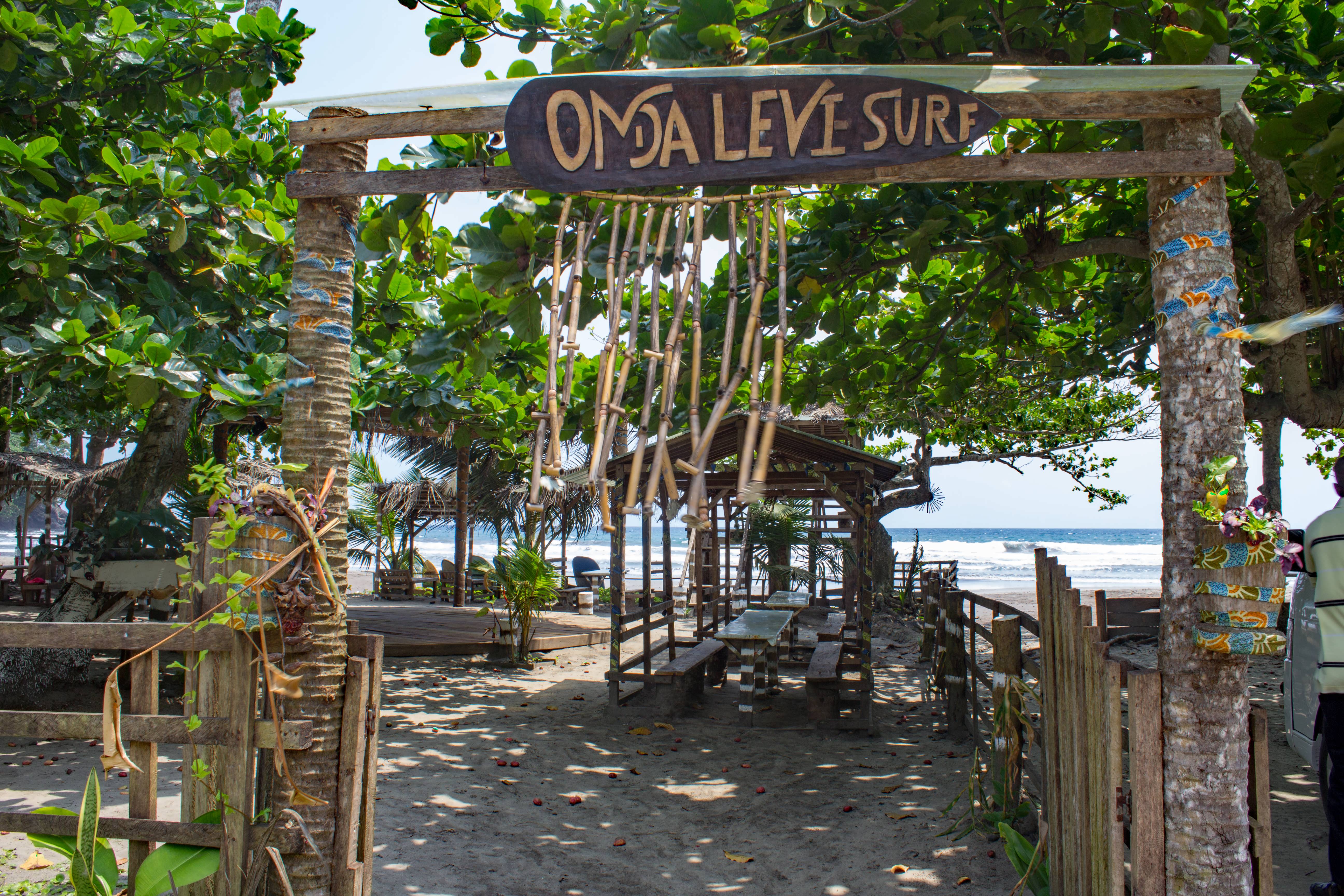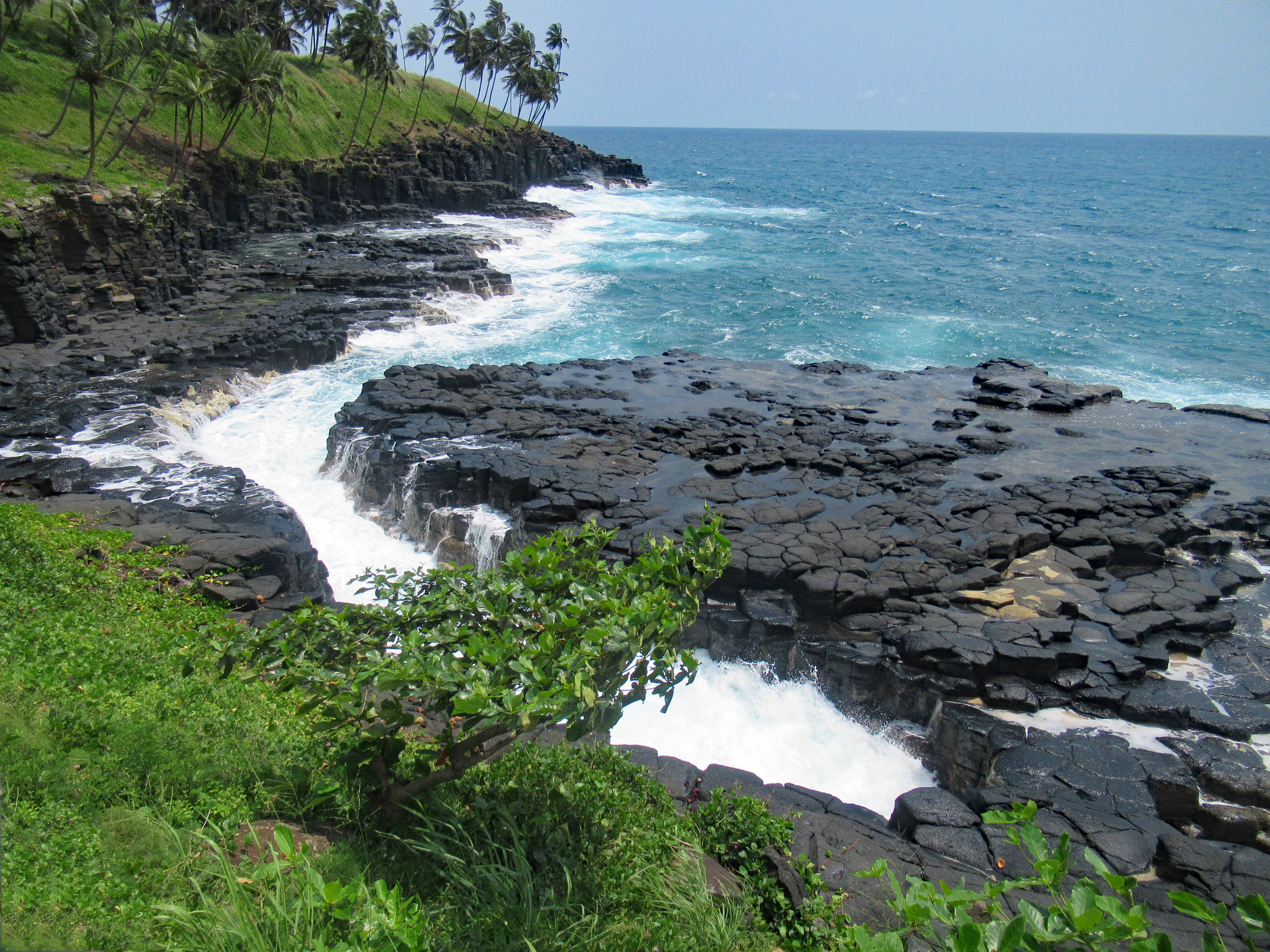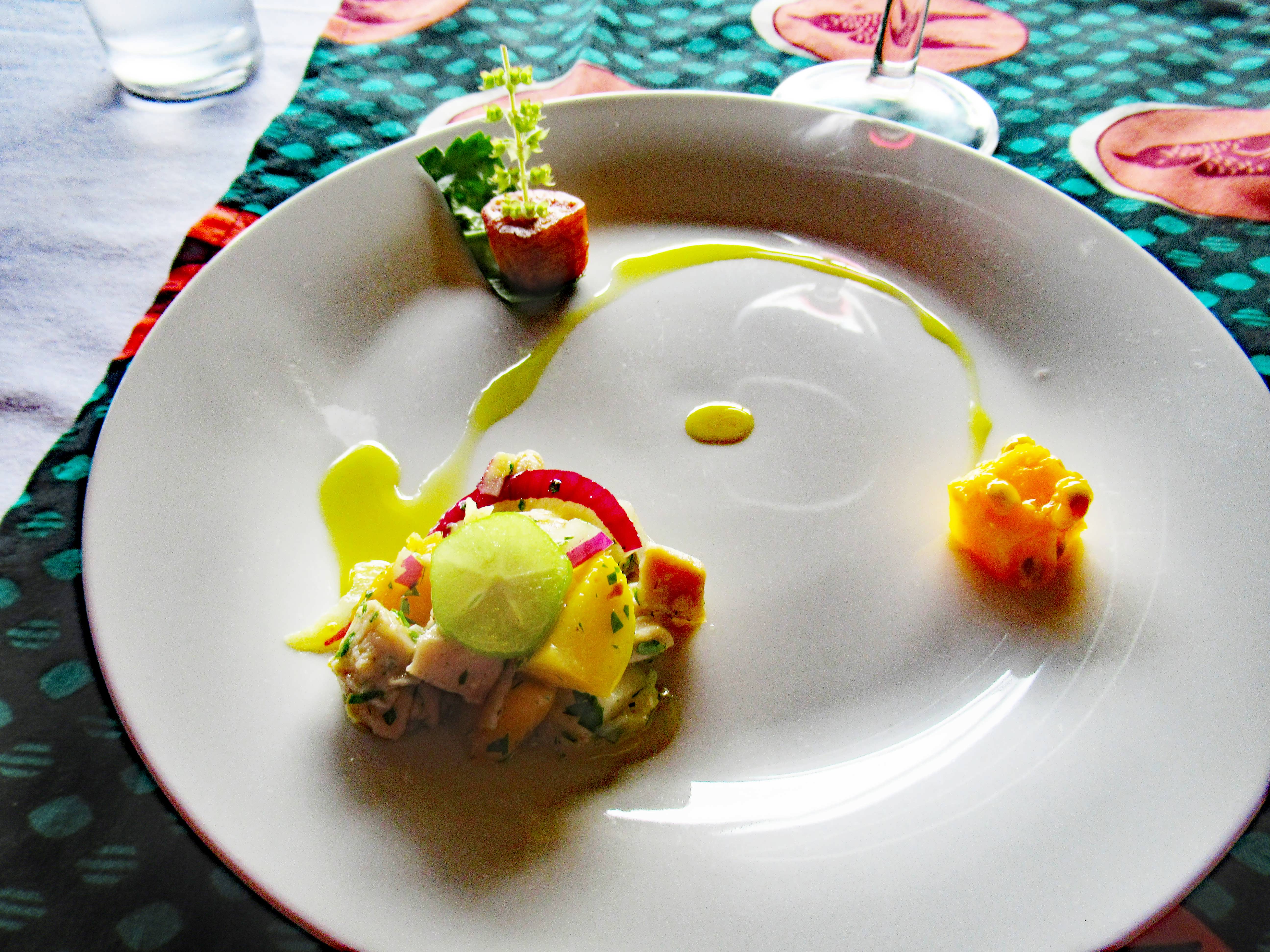Whilst staying for five nights on the small, little known African island of Sāo Tomé, we enjoyed a series of excursions organised by a local agency, Navetur.
After a somewhat nauseas trip the first day, due to the quality of the vehicle and roads, we hoped our second excursion would be smoother. The signs were good when Nino arrived in a minibus, rather than the dilapidated Landrover we’d bounced along in.
We retraced the previous days route down the east coast, but drove more slowly through the fishing villages of Pantufo and Praia Melao before hitting Santana, the second largest town on the island, but with a population of only 10,000. The yellow painted Catholic church, dedicated to Santa Ana, had been restored in 1940 when the original 16th century building burned down. The door to the church school was open, and although we could see children in the classroom, others were milling around outside, all wanting their photographs taken.
Back on the road, our second stop of the day was a bridge where women were washing clothes in the river and huge sheets were being dried on the bank. On the roadside, were plants with cocoa, breadfruit, jackfruit, papaya and starfruit.
Until independence from the Portuguese in 1975, Sāo Tomé had a thriving cocoa and coffee industry, which for various political reasons, declined. However, it left a legacy of many large roças or plantation estates, and we visited what was one of the largest and now most photographed, Roça Água Izé. Most are derelict, but Água Izé has been converted into an arts centre. Inside we found an eclectic display including huge pictures, bird statues made from motor bike petrol tanks, baths cut in half and turned into benches, handicrafts and artifacts made from recycled materials. The centre was obviously used by children’s groups as there were lots of books, sculptures and drawings about plastics and the ocean. There was also the remains of the plant used by the former factory and of the 50km of railway tracks that used to run around the 80km2 plantation: in its heyday 50 European employees would have overseen 2,500 Angolan contract workers.
The larger roças had hospitals, and Agua Izé had one of the most modern, not just in Sāo Tomé but in West Africa. Given the choice of driving or walking for 30 minutes to the hospital, we chose the easy option as it was uphill and 30 degrees. We passed the derelict former workers’ homes, now occupied by local communities. On arrival, it was easy to imagine how beautiful the hospital would have been with a grand central staircase, and wings on both sides for the men and women – again all now occupied by people, despite the state of disrepair. From its vantage point there was said to have been good ventilation and superb views of the ocean.
Our next stop was the mesmerising Boca de Inferno or Hell’s Mouth, a natural phenomenon where sea water shoots through a rocky basalt channel before gushing high into the air. Here we enjoyed fresh coconut water and browsed the craft stalls.
At the nearby beach of Seven Waves we walked along the sandy beach but were told that undercurrents made it dangerous for swimmers, but ideal for surfers.
We then drove up to Roça Sāo Joao which has been turned into an ecotourism venture, where Joao Carlos Silva, a TV chef, presides over what is claimed to be the best restaurant on the island. We began with a palate cleansing exercise – a tasting of pink peppercorn, minced ginger and chocolate followed by a glass of red wine with the same flavours. The open-plan kitchen was at the far end, and we could see and hear preparations, but unfortunately, we were not encouraged to visit. Sitting side by side at our tables, meant we could both enjoy views of the mountains and ocean. Our lunch comprised of a tasting menu, with each course being described in detail by the various waiters – unfortunately some spoke only Portuguese, and we had to guess what we were eating. There was lots of fruit and vegetables, with plantain and beans featuring heavily, all cooked in various ways and artistically arranged on the plate with drizzles, swirls and blobs. We didn’t know how many courses there were, and after a fruit with four different blobs (we were told the order to eat them in, finishing with chocolate), we found the next course was fish, yellow rice, beans and cassava powder. This extravaganza, likely to cost over £150 in London, was incredible value at €25. During the meal, the rain started, and after a few short downpours, it began pouring continually with rain both dripping off the roof like a waterfall, and through the roof which meant one couple had to move and buckets had to be brought out.
We left nearly two hours later, feeling rather full. The combination of so much varied food and hairpin bends did nothing to settle our stomachs, and we arrived back at the hotel feeling so nauseous the first thing we did was find the Alka Seltzer. Dinner that evening was a plate of homemade crisps with a glass of wine.












